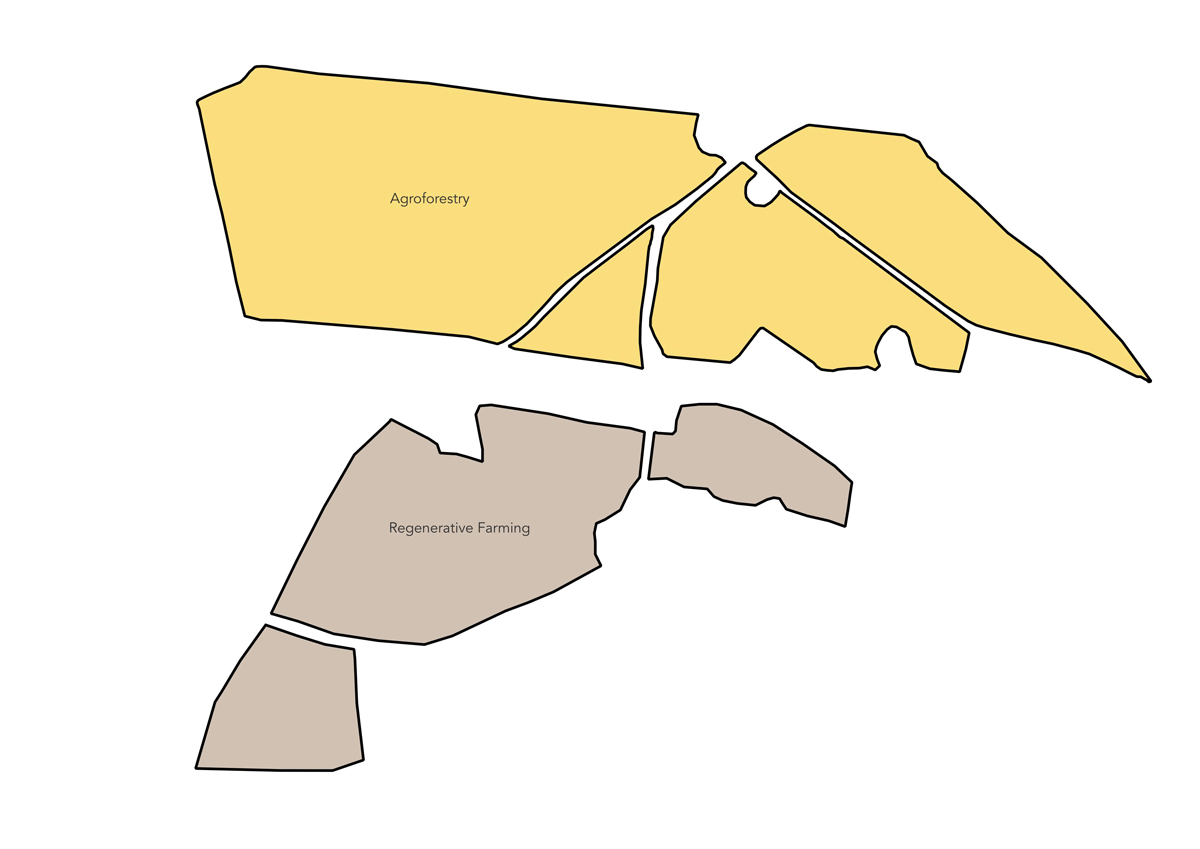We’re in a transition not only in farming, but also in farming policy. Money from tax payers is shifting from paying farmers to farm, to paying much more specifically for the environmental benefits they are producing. That’s a work in progress, so right now farmers are faced with a lot of uncertainty. Projects like this which are able to share the decisions they’re making and do so really transparently, play an incredibly important part in helping farmers navigate that really difficult situation.
Professor Tom MacMillan, Elizabeth Creak Chair in Rural Policy and Strategy at the Royal Agricultural University

The land at Sapperton Wilder is typical of the Cotswolds, with stony soils known as brash that have been farmed intensively with increasingly poor arable yields and correspondingly degenerating soils over decades. Cotswold brash soils are known to be thin, stony and prone to erosion in part due to the move away from mixed farming to arable intensification over the past 60-70 years. There is little topsoil left.
Regenerative agriculture is a system of farming that works with nature to improve soil health, reduce costs and increase farm profit margins, while delivering a range of environmental benefits. At Sapperton Wilder, with the help of our scientific partners and advisors, we aim to understand, document and share how the decisions we make managing the land influence these benefits.
These environmental benefits can include sequestering carbon from the atmosphere as organic matter in the soil, increased biodiversity and improved water quality. Regenerative farming can also reduce the use of expensive inputs such as fertiliser and pesticides.
This method of farming draws on long understood principles of crop rotation and mixed species farming with space for nature, delivered using modern innovative methods. New markets are emerging for the ecosystem services, carbon, water and biodiversity which will diversify income streams.
It is important to note that every field on every farm is different, each situation unique. The general consensus for anyone starting their own transition into regenerative farming is to start small and build up scale over time.

Sapperton Wilder is transitioning its land management from intensive agricultural practice to using the principles of regenerative farming while measuring the outcomes. The project team are promoting soil health by decreasing disturbance and testing new ways to decrease the use of chemicals during transition. Keeping living roots in the soil for as much of the year as possible, while integrating livestock into rotations will support soil biology, microbial life and build organic matter.
Sapperton Wilder is ‘wildling’ its soils using diversity in crop, pasture, livestock and wildlife species. This is being achieved through establishment of herbal leys. Herbal leys are a combination of grasses, herbs and legumes, that are palatable, higher in protein and frequently have medicinal properties for grazing livestock.
The deep rooting of the different plants encourages soil resilience, including soil drainage, often reducing nitrate leeching and improves biodiversity of soil microbes, birds and insects, as well as the number of worms.
The context:
- The regulatory framework in the UK is changing following Brexit with policy designed to encourage farmers to adopt more sustainable practices
- Climate change is singled out as the biggest risk to UK and global food production in the future, according to the first UK Food Security Report.
- The UK has pledges to protect 30% of its land and seas by 2030. Highest potential gains and strongest drivers for change are in areas with 'marginally' productive, overworked soils.
With support from science partners, Sapperton Wilder is using, testing and pushing the boundaries of existing agricultural frameworks. A series of experiments are being conducted on the cost benefits of establishing regenerative farming practices. Including how best to re-integrate trees into the landscape and the farming cycle in the Cotswolds.
